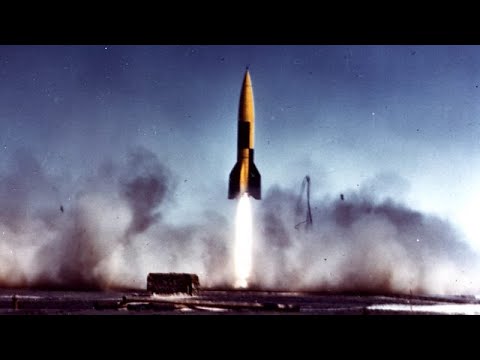Near the end of World War II in Germany, U.S troops captured the area of Nordhausen, where the underground Mittelwerk factory built V-2 rockets. This was within the zone of Germany which was to be occupied by the Soviets after the defeat of Germany, and a furious effort was mounted to recover V-2 rockets, components, and manufacturing information before the hand-over date arrived. Allies U.S. and U.K. had agreed to share information on captured German technology, but in this case the U.S. said “not so much”, leaving it to the British to find and capture V-2 hardware in other locations. Interestingly, the British were the first to launch a V-2 in the postwar era, with three captured missiles launched from the British occupation zone in Germany in October 1945 in Operation Backfire, with captured German personnel preparing and launching the missiles. The U.S. would not launch a V-2 from White Sands Proving Ground in New Mexico until April, 1946.
Some details of that chase, from Soviet perspective, are well described in “Rockets and People” by Boris Chertok:
Curiously, from this book, when the Soviets recovered elements of V-2 technology and the engineers immediately wanted to proceed to build “a better rocket”, Ustinov who oversaw the program (later a minister of defence), asked them first to just replicate V-2, but only with materials and tools available to them at the time. That proved to be a serious challenge, but served as an important stepping block for building the expertise. Once they launched the copy, Ustinov let them go an work on a better design.
Related to this, Operation Paper Clip is also a really good read.
Chertok remarked that it is often harder to reverse-engineer somebody else’s design than make a new design from first principles, using the captured technology as a general guideline. For example, the V-2 contained something like 57 different alloys of metal in its components, some with difficult-to-analyse and reproduce coatings. When reverse-engineering, you never know which were chosen because their properties are required for correct operation and which were made that way simply because that’s what the German aviation industry had on the shelf or what was available in sufficient quantity in the shortage-plagued wartime economy. Slavishly replicating every detail of the V-2’s construction took longer and cost more than designing an equivalent with the materials and components already available to Soviet engineers.
Of course, when working for Stalin, failure was really not an option, so engineers didn’t want to be responsible for making a change which resulted in failure.
